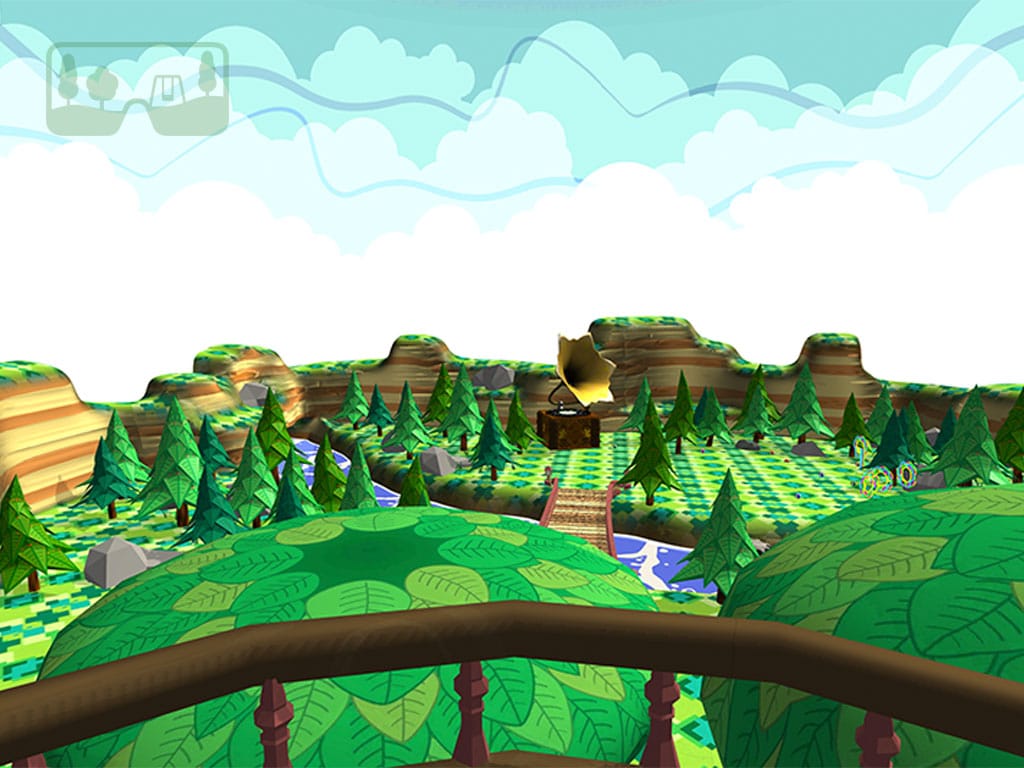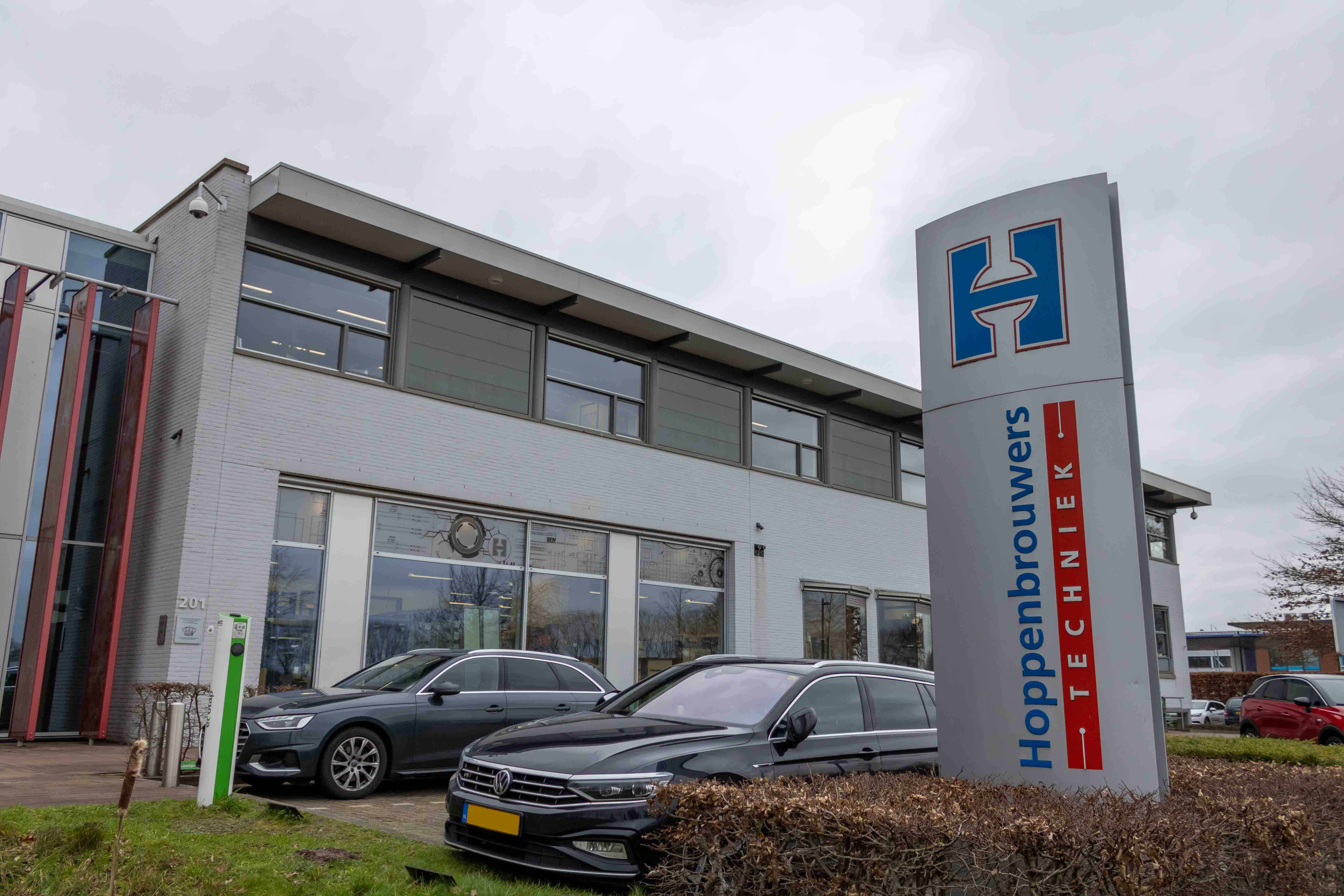
A virtual playground for children in hospitals. PlaygroundVR is putting the finishing touches to the technical development of their virtual reality environment. “Playing outdoors is invaluable for children’s development,” says Freek Teunen, co-founder of PlaygroundVR. “Outside, there is plenty of scope for their imagination. They do a thousand things with just a ball.” Former students of Eindhoven University of Technology also want to offer this experience to younger hospital patients.
Children can be adversely affected if they are in hospital for a longer period of time and are unable to play outside as a result. “By wearing the VR glasses, children can imagine themselves to be at a playground just like any other playground they normally have in their daily lives. There are also fantasy elements such as a large music box or flying hoops,” Jason van Eunen explains, co-founder of PlaygroundVR. The whole thing is very colorful. “The children can see each other through virtual avatars. So they are really able to play together.”
How did you come up with this idea?
We are very passionate about the technology. That’s why we wanted to see how we might make Virtual Reality (VR) as useful as possible. The advantage of VR is that the user is able to forget for a moment where he or she is and can completely immerse themselves in another world. Subsequently, we soon discovered that our technology would be very beneficial for hospital patients. They aren’t able to play like they do at home. As the children themselves have indicated, they miss playing outside the most. That’s why we have developed a virtual playground.”
[youtube https://www.youtube.com/watch?v=6Ssiw0R3Bzo]
Doesn’t that just mean that you are making children sit in front of a screen even more?
Teunen: “We certainly don’t want children to be wearing VR glasses all of the time. That’s why we also work with play sessions, a short period when children can play with the glasses. Although we do consider that our virtual playground is different from the shooting games that children often play on screens. Of course we would like to see children playing outdoors. But if that isn’t possible, VR glasses are a pretty good solution. We still connect children with each other and give them the experience of playing outside.” Van Eunen adds to that: “It would be better if children could learn new games in the virtual playground and eventually apply them in real life. We want to further stimulate imagination and creativity that way.”
How are you going to finance this?
“We have launched a crowdfunding project this week. Our goal is to raise 55 thousand euros. Then three hospitals will be able to use the virtual playground in their children’s ward. Approximately half of that money will be used for the latest developments in technology. We will use the rest to further roll out the concept,” Teunen states.
“The goal behind crowdfunding is to show hospitals the pedagogical benefits of virtual playgrounds. This is difficult with VR because it is a completely novel technology. We first have to prove that it works. That’s what we’re going to do with the money that we raise. We think that children feel better because of the playground and as a result are able to recover much faster.”
“Financing this product with donations doesn’t seem right to us. That’s why next year we want to see how we could use the virtual playground as part of a course of treatment. We are hoping that the playground will become a healthcare resource so that it can be paid for out of medical insurance costs.”
Why did you opt for crowdfunding?
“We think crowdfunding is very appropriate for our objective. PlaygroundVR is a start-up and definitely contributes to society. We provide children with moments of happiness at a time when they are extremely vulnerable. Crowdfunding is a way to build support,” says Van Eunen.

How can VR be part of a treatment?
Van Eunen: ” Distractions are very important to children when they are in hospital. That’s why there are pedagogical staff in the children’s ward and CliniClowns and iPads to keep the children busy. PlaygroundVR is distracting in several ways because it ensures that the child feels like he or she is completely out of the room. Instead of watching a movie, the kids are really immersed in it.”
“This distraction caused by wearing VR glasses can be used during a treatment. For instance, when a child is holding an infusion needle in their hand. This is an unpleasant experience because it doesn’t feel right and it’s not nice to watch either. A child can play outside with the VR-glasses on and is less aware that a needle is being stuck into their hand. This helps to avoid pain and maybe even painkillers. This allows a child to get through a whole treatment feeling a lot less fearful.”
“We spoke to a girl who literally said that she had forgotten for a short while that her leg was broken. Because she could just walk in a playground. Those are the wonderful things about VR. You can’t do that with an iPad,” Teunen says proudly.
Was there a time when you were afraid that the concept was not going to work?
“Yes,” says Teunen. “As soon as we started work on this three years ago. We took part in a pitch competition at the time, but were turned down right away. Back then, the VR industry had not yet developed very far and the technology was still quite unknown. Now we can see that healthcare professionals and parents do appreciate the value of it. They really like PlaygroundVR better than, for example, a Playstation with Call of Duty.”
“The challenge for us is to find hospitals that dare to take this innovation aboard. Institutions often find these kinds of new technologies exciting to implement. We are already in talks with a number of hospitals that are interested as it is. We will be launching the virtual playground at the Wilhelmina Children’s Hospital towards the end of the year.”
It sounds like an important aspiration to help children. Do you have a concrete goal that you want to achieve?
“Of course, it’s cool if we can improve the hospital experience for a few children. But in the long term we want to be able to connect children with each other who are in different hospitals. Then children who have the same conditions will be able to share their experiences with each other. This way, we not only want to forge new contacts between children, but we also want to bring children together with their families and friends. As an example, we could connect children in the hospital to their classmates so that they would be able to play together in the playground,” Van Eunen explains.
Teunen continues: “We want to show that it is more fun to invent a game that has a real impact. Aside from that, we want to contribute to the VR revolution in healthcare. VR can really make a difference in healthcare. Not just for children, but also for people with dementia, for example. We are hopeful that PlaygroundVR will inspire others to make great applications for healthcare as well.”







